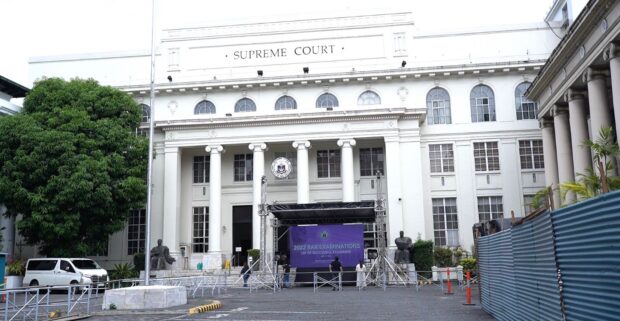Lawyer disbarred for faking court order
MANILA, Philippines — The Supreme Court has disbarred a lawyer for faking a legal document in 2006 in an elaborate scheme to make it appear that a Bacolod court had granted his client’s petition to have the latter’s marriage annulled in less than a year.
As it turned out, no such petition was filed and a court order supposedly issued by the Regional Trial Court (RTC) in Bacolod City had been forged, the high court found.
Sitting in full court on Aug. 22, the magistrates ordered the disbarment of Ariel Maglalang for fabricating the court order in the civil case dating back 17 years ago.
“His acts evince his disrespect for the rule of law and the courts. Further, his use of the Forged Order reflects poorly on his fitness to practice law, and brings discredit upon the entire legal profession,” the high court ruled.
In a statement summarizing the decision, the court’s public information office said the unnamed client hired Maglalang as his lawyer in February 2006 and asked him to petition the court for the declaration of nullity of his marriage with his wife.
Article continues after this advertisementPresumptive death
The lawyer, who had asked for and received P100,000 for his services, promised his client that he could get a favorable judgment in three months.
Article continues after this advertisementBut Maglalang never submitted any petition, court documents showed.
Instead, he only made it appear that he filed a petition for the presumptive death of his client’s spouse and that this was heard and granted by Judge Ray Alan Drilon of Branch 41 of the Bacolod RTC.
Nine months later, in November 2006, Maglalang gave his client a forged court order that essentially declared the presumptive death of his client’s spouse “for all purposes” pursuant to Article 390 of the Civil Code.
It was only in 2008 when the Bacolod judge and the clerk of court learned about the forged order, prompting them to seek the assistance of the National Bureau of Investigation. As a result, an administrative case was lodged against Maglalang.
In determining Maglalang’s liability, the Supreme Court said it applied its new Code of Professional Responsibility and Accountability (CPRA), which took effect on May 29.
The CPRA explicitly provides that its rules “shall be applied to all pending and future cases, except to the extent that its retroactive application would not be feasible or would work injustice, in which case the procedure under which the cases were filed shall govern.”
The court reiterated the presumption that in the absence of a satisfactory explanation, one who is found in possession of a forged document and who used or uttered such is presumed to be the forger.
Propriety, fidelity
“[T]he Court was convinced, based on the evidence, that Attorney Maglalang authored and used the Forged Order. First, he was identified by his client as the source of the Forged Order. Second, this was duly corroborated by a witness who personally saw Attorney Maglalang give the Forged Order to his client. Third, this was also confirmed by the NBI after confidential investigation,” the court said.
Consequently, the court ruled that Maglalang’s authorship and use of the forged order contravened the CPRA’s rules on propriety and fidelity.
“Given the evidence and circumstances, the Court found the supreme penalty of disbarment against Attorney Maglalang in order,” it said.
